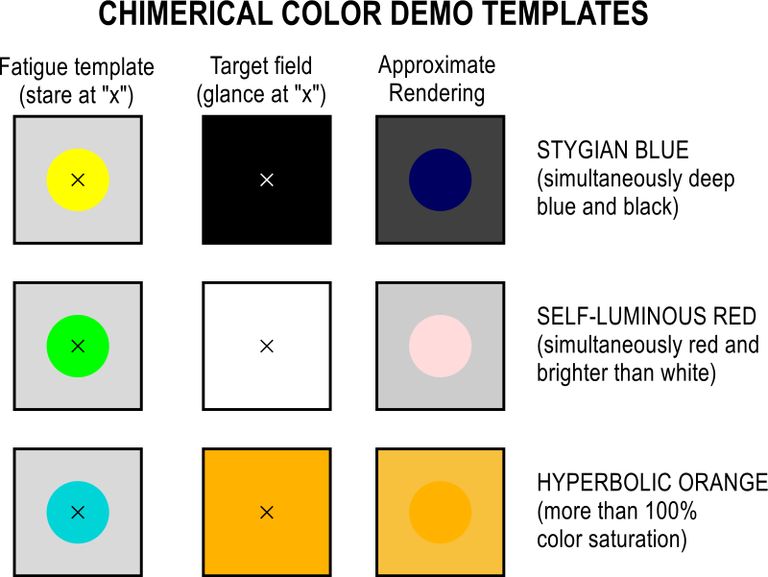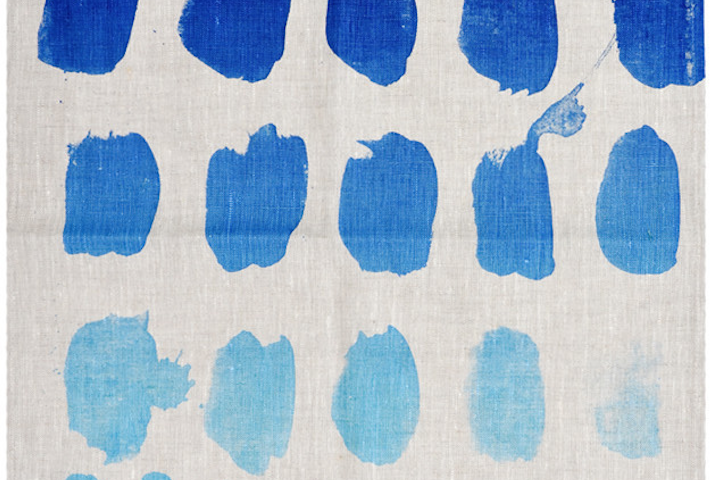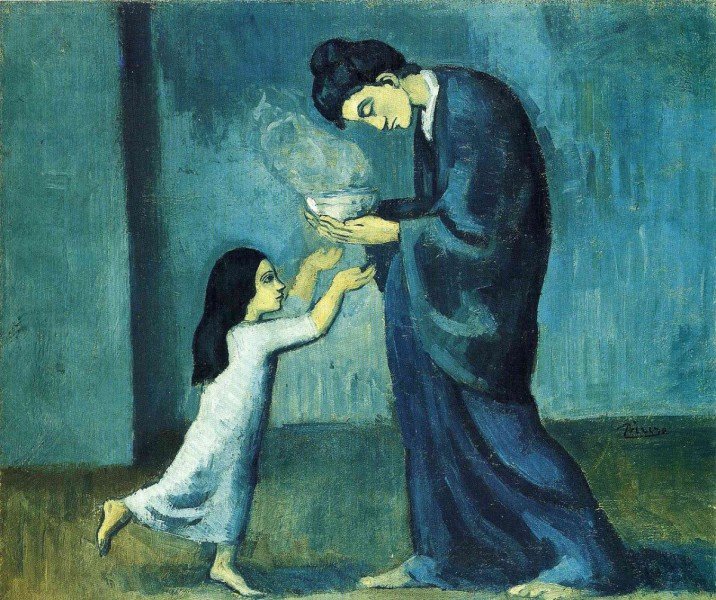If it doesn’t have a name, does something really exist? No, this is not a philosophical post, but an attempt to understand one of the mysteries of ancient times - did our long-forgotten ancestors see the color blue or not? For all of us today, the question seems rather nonsensical - why wouldn’t they see the color blue, there’s plenty of blue around us. Actually, the dress I’m wearing as I write this is blue.
The idea that ancient people could not see the color blue was first put forward in 1858 by British scholar William Gladstone, later prime minister of the country, who noticed something strange while reading Homer’s ‘Odyssey’. At one point in the epic tale, Homer describes the sea as being wine-dark, which is quite puzzling. One might even ask what sort of wine did Homer drink? Or someone might point out that Homer is thought to have been blind, which may or may not be true. We don’t really know much about the Greek poet or if he was even a real person. Fact is the ‘Odyssey’ recounts a myth deeply ingrained in Greek culture, which means thousands of years ago people had a different perception of colors, or at least of blue.
William Gladstone took to reading the ‘Odyssey’ very carefully and discovered black was mentioned 200 times in the epic, white some 100 times, yet blue not even once. This is quite odd for a people living on islands surrounded by the sea.
Gladstone’s discovery was further studied by German Jewish scholar Lazarus Geiger, who was a philologist and believed language was the source of human reason. In the 1860’s, Geiger formulated a theory regarding the apparition of words for colors in different languages, explaining it always follows the same pattern. He came to this conclusion after reading through major Ancient texts of the Hindu, Chinese, Arabic and Hebrew texts, all of which made no mention of something so obvious to us as blue.
The first words for colors used by our distant forefathers were black and white, which made sense, as they replicated the distinction between night and day. The cycle of dark and light was essential for primitive people. Then they acquired a word for red, the color of blood. And there was a lot of blood in primitive societies - from the animals slaughtered to the unfortunate wounds that spelled death.
According to Geiger’s theory, after red, primitive people acquired words to describe yellow and green. Blue always came last.
Going back to the ‘Odyssey’, if Homer ever existed he lived sometime between 800 BCE - 7000 BCE, but the events narrated in his epic tales are much older than that. Folklore is transmitted by oral tradition and it might be that when Homer told the story, he used the same words as countless other story-tellers before him. It wasn’t technically that Homer thought the sea to be wine-dark, it’s just that the story goes all the way back to a time people simply had no term for blue.
Geiger’s theory was verified by anthropologists and linguists of the 20th century, who hailed it as a major discovery in modern linguistics.
Additionally, Geiger postulated the theory that language first evolved from the sound primitives used to warn each other of danger or signal something very important. Words came out of the need to communicate and it follows naturally that first came terms that were actually necessary. Apparently, blue was not important enough. It’s not that they didn’t see it, it did not matter to them, which is why it was lumped together with green. The skies were of a different shade of green than grass probably, but still, sort of green.
In modern times, experiments have been made to try to prove ‘primitive’ people cannot see blue, most notably one that involved tribesmen in a remote part of Africa. The tests proved that those people had trouble distinguish between green and blue.
The idea that people tend to see the colors that matter to them can be illustrated by a very mundane example. A woman in a department store will spend hours trying to decide which particular shade of a dress she wants - the fuchsia or various magenta hues on display. Meanwhile, the husband will be slowly dying in a corner, not being able to understand how hard can it be to buy a red dress. For a woman the various shades matter, but not for a man, so he won’t be bothered to describe it other than red.

Truth be told, blue is not a color that we encounter much in nature, there’s a couple of flowers I know of and, let’s be honest, many times we go to the beach the sea doesn’t appear particularly blue. Not to mention that holidays at the beach weren’t much of a thing in ancient times!
That just leaves us with the sky and, frankly, I can’t think of any reason why primitive people ignored the skies above.
Speaking of colors that are impossible to see, there are indeed some that our eyes cannot perceive. They are called impossible colors or forbidden colors.
Try to imagine something that is reddish green. Not the muddy brown you’d get from mixing the colors, but something that is at the same time red and green. The reason is that the receptor cells in our eyes (the cones and rods we learned in school about!) have an antagonistic response to those colors - a cell that is activated by looking at something red simply doesn’t register green, it’s a color that turns it off, so to say. This explains why, under normal circumstances, you cannot see something reddish green or something that is blue and yellow at the same time.
There are, however, ways to trick the brain into seeing ‘chimerical’ colors, by staring intently at a particular color until some receptor cells become fatigued and lose their sensibility. After 20-60 seconds of staring, you switch to a neutral target and, if you’re lucky, you’ll see impossible colors - like the stygian blue below, which is both deep blue and black.

Hope you had fun staring at the above image and you did manage to see something amazing. Sorry to say this, but I failed.
And, just for the fun of it, I’ll leave you with this other challenge. It is said you can see the impossible ‘yellow-blue’ if you squint hard enough for the two + symbols to overlap.
Do let me know in the comments if you did it! Also, don’t blame me if you get a headache!
Post authored by: @ladyrebecca.
References: 1, 2.
Click the coin below to join our Discord Server
)




Fascinating. The perception of colors sounds to me as the perception of reality. The physical mecahnisms that allow us to perceive the colors of things around us are usually subjected to some psychological phenomena that may alter that perception.
I luaghed at the example you provided with a woman struggling to decide from a bunch of dresses a man sees as red.
Precisely some days ago, as I was visiting the grave of a diseased niece, I asked her sister why they chose those red tiles for the grave. She told me it was not red. it was some sort of "guava tone". I saw it as red. All redish things are red to me.
Thanks for proving my point! We all look at things that interest us. I, for instance, don't notice anything about cars... never had one or planning to, so they're all the same to me!
nice read. Informative.
Posted using Partiko iOS
Hello @ladyrebecca. Apart from interesting I found it wonderful and unusual your publication I can not imagine life without my favorite color. That it wasn't important enough for a writer to give a name to the combination of blues that form in Greece is unforgivable. But we cannot judge our ancestors only by learning from them and being grateful to the evolution of the times. I lack words to describe the immensity of the blues that surround me. As always @adsactly allows us to read excellent content and learn more.
Posted using Partiko iOS
I didn't get to put it in the post but our ancestors were sort of blue-less as the pigment was made from lapis lazuli, which was rare and expensive, so not many could afford blue cloth and stuff.
I got the yellow blue by crossing my eyes. Does that count?
Very interesting post! Maybe blue was not important is because there are no blue foods, as you say blue is not often seen in nature except in the sky. Interesting and something I never thought about before today. That's what a great post is all about.
Congratulations, of course it counts!
You make an interesting point with blue foods, I hadn't thought of that. In my country, there's places that sell some sort of iced drink of a very bright blue color, it seems so unnatural I wouldn't drink it even if they paid me.
Is really very interesting information you give us in your post, @ladyrebecca. Although blue is one of my favorite colors, I can understand that it has not been perceived as a color of its own by the ancients, if those conjectures are true. When I consider that in several passages of Greek mythology, the sea is associated with the bull, it occurs to me that the sea was not seen as blue, perhaps more towards black.
My eyes at the moment (I have some discomfort in them) do not allow me to do all the proposed exercises, but I do know that in my "inner vision" (to call it in some way), that is, the one that occurs with the eyes closed, only the blue appears when, in meditation, I center the force of my eyes (I concentrate) towards the middlebrow, in that point called "the third eye". That has always seemed very striking to me.
Thank you for your post. Greetings.
Yes, that sounds intriguing. I've never tried tht sort of meditation, although I believe there might be something to that third eye theory... maybe we were smarter when we were able to use it.
Didn't really try those exercises, either, I also have eye problems and I'm not taking any chances, not even with my own post!!
Oh, I can't do the exercises because I suffer from a visual condition called keratoconus. This condition is gradually taking my eyes off me, so I will surely stop appreciating colors sharply someday. Personally, there are some colors that have smells, like green, blue, yellow or red. My grandmother's house, for example, which is surrounded by many bushes and grasses, always smells of green. As always, fascinating post, @ladyrebecca.
I think it's wonderful if you can associate color with smell, you must be a highly sensitive person!
Sorry about your eye troubles. I hope you find a way to fight this thing.
Hi, @adsactly!
You just got a 0.28% upvote from SteemPlus!
To get higher upvotes, earn more SteemPlus Points (SPP). On your Steemit wallet, check your SPP balance and click on "How to earn SPP?" to find out all the ways to earn.
If you're not using SteemPlus yet, please check our last posts in here to see the many ways in which SteemPlus can improve your Steem experience on Steemit and Busy.
@ladyrebecca, Colours are mystery aspect too and by that i mean how we are pursuing colours other creatures are pursuing colours differently.
Posted using Partiko Android